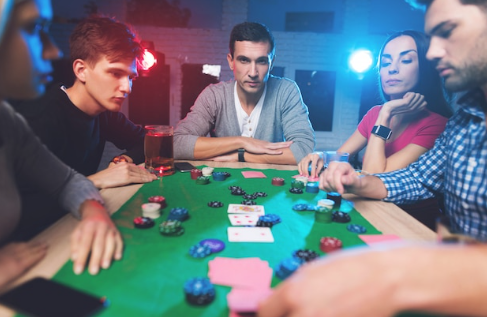How to Read Your Opponents in Poker: Psychology and Table Behavior

One of the key skills in poker is the ability to “read” your opponents based on their behavior, body language, and facial expressions. Winning in this game is a combination of experience and luck. Luck accounts for only about a third of success; the rest depends on hard work, observation, and knowledge.
Psychology in poker is an art that allows you to take down a pot even with weak cards preflop. The euphoria of an approaching victory, the excitement of growing the pot—all of this must be kept under control, as your opponents will also try to “read” you. This article discusses tendencies and psychological techniques that every player will find useful.
Typical Beginner Mistakes
1. Playing aggressively without reason.
A strong hand gives you excessive confidence, and the player begins to mindlessly raise bets on every betting round. At best, you’ll take down a pot slightly more than the blind if more experienced players fold. At worst, you’ll see a gradual loss of money, especially at a table with 5-10 players. Potential profits will quickly evaporate.
2. Bluffing without logic.
Bluffing is a strategic tool, not a method of constant deception. It only becomes effective in the hands of a professional who understands the psychology of their opponents, not just keeps their cool. An inappropriate bluff often leads to a rapid loss of chips. Although there is a wealth of literature on bluffing, it’s far from the most important psychological technique in poker.
Reading body language and facial expressions
Analyzing gestures, facial expressions, and intonation is a crucial tool in determining whether your opponent is bluffing, whether they’re intentionally acting, or whether they’re unconsciously revealing their reaction to the situation.
“Strong – Weak.” If your opponent stares at you while betting, it’s likely an attempt at psychological pressure, a desire to force you to fold.
Weak hand. The opponent shrugs, speaks in a tired voice, and tries to appear indifferent. Be careful—they could be setting a trap.
Averted gaze. Intentionally avoiding eye contact often betrays a dangerous and unpredictable player.
Glancing at the chips while betting. This is a distraction maneuver, a feigned calm, when in fact it’s a sign of weakness.
A shaking hand. Usually signals a strong hand. Faking nervous trembling is extremely difficult, especially when trying to maintain composure.
Jerky body movements when placing chips. After a calm game, this is a clear sign of insecurity or bluffing.
Nervousness and fidgeting. A sign of inner tension and impatience.
Breathing. One of the most obvious and uncontrollable signs. A strong hand excites the nervous system, and breathing quickens. Bluffing, on the other hand, is often accompanied by holding your breath.
A quick glance at the chips after the hand is dealt. This is a sign of satisfaction with the cards—the player intends to continue.
Touching the chips. If a player is waiting for bets and reaches for the chips, it could be an attempt to exert pressure with a weak hand or, conversely, a subconscious reaction from someone with a strong hand. This is rare among experienced players.
The more practice a person has at the live tables, the more you begin to understand the psychology of life and poker. These skills can be trained, and you can become more and more aware of people and understand their actions. A more conscious and psychologically savvy player is required for a deeper analysis.

Comments are closed